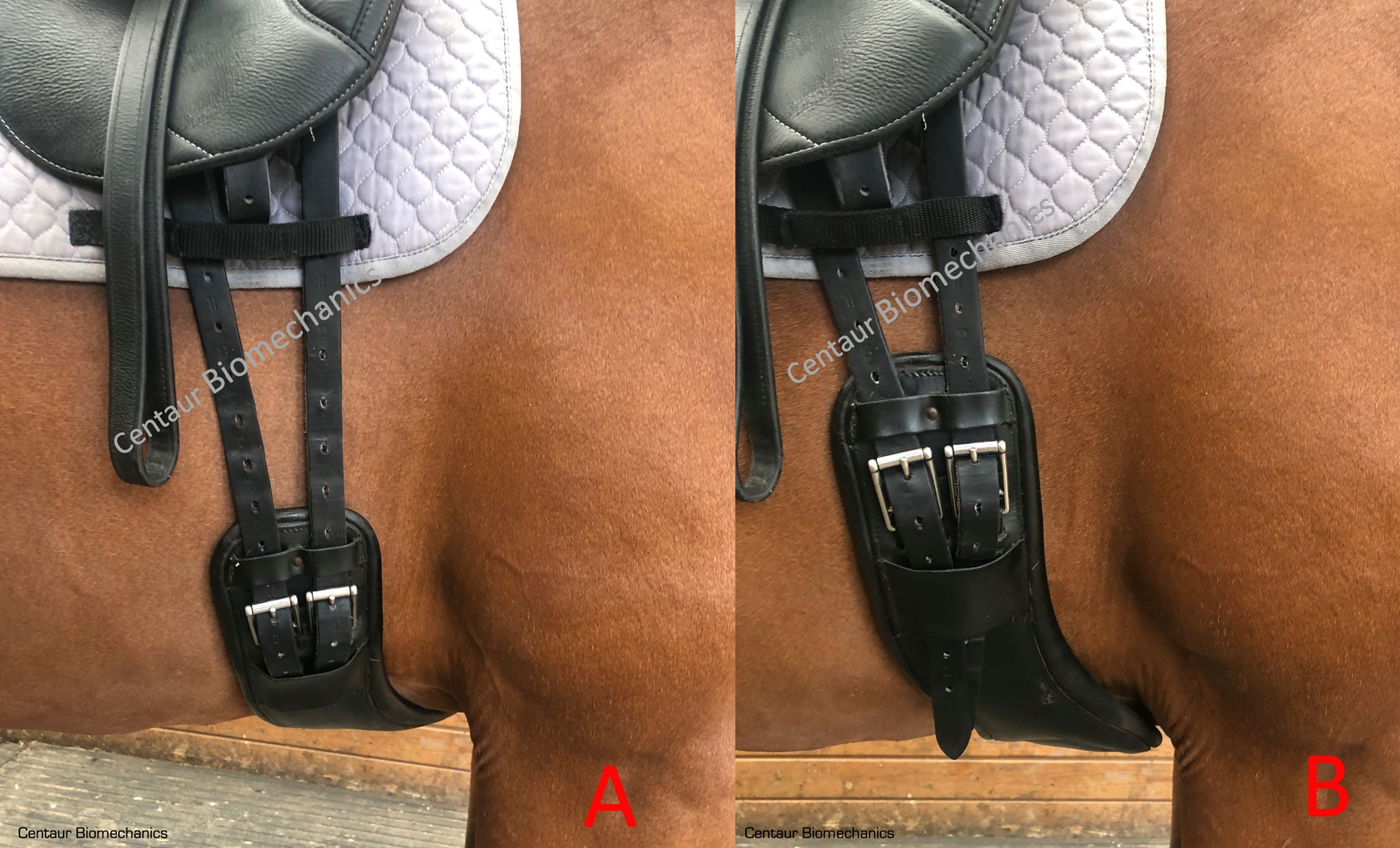B19: GIRTH BUCKLE HEIGHT – DOES IT MATTER?

GIRTH BUCKLE HEIGHT – DOES IT MATTER?
It has been a long-held belief that the position of the girth buckle can influence the rider’s leg position and effectiveness of their leg aid. To limit this, riders can choose a girth which allows the buckles to be fastened so that they do not hinder the riders leg position or effectiveness. This generally means using a short girth so that the buckles are fastened in the region behind the horse’s elbow (A), meaning the buckles are out of the way of the rider’s lower leg.
Previously we have demonstrated the effect that girth design has on equine locomotion (1, 2). In brief, girth pressures are highest in the region behind the horse’s elbow and not over the sternum. When girth pressures were reduced with girth modifications, this was associated with improved gait features. In conclusion girth pressures can have a significant effect on the locomotor apparatus of the horse.
As already mentioned, girth pressures are highest in the region behind the elbow therefore, by positioning the buckles in this region, you are increasing the pressures and consequently affecting the horse’s locomotion. The girth lies over the junction of various muscles: intercostal, thoracic serratus ventralis, descending/ascending pectorals, external abdominal oblique and rectus abdominus all of which are involved in posture and locomotion therefore, girth fit and design are important considerations along with the girth buckle height. The horse will develop a locomotor strategy to alleviate any discomfort caused by, in this case, the girth. Girth pressures are directly related to locomotion with girth pressures occurring every stride therefore, it seems logical to understand why some horses will alter their way of going in response to equipment induced pressures.
As a general rule, the higher the girth buckles can be positioned, the better avoiding the region behind the elbow (B). This does not affect the riders leg position or use of their leg aid therefore, the long-held belief that girth buckles should be low down, is a fallacy and greater awareness of the effects that girth buckle height can have on equine comfort and performance is needed. Girth fit, design and positioning of the buckles should be discussed with a qualified saddle fitter and the effect that the girth can have on equine comfort and performance should not be underestimated.
Hope the above is interesting.
Previous blogs http://www.centaurbiomechanics.co.uk/blog/
Please like / follow our page for more blogs and please share to raise awareness.
Dr. Russell MacKechnie-Guire
Centaur Biomechanics
1. Murray R, Guire R, Fisher M, Fairfax V. Girth pressure measurements reveal high peak pressures that can be avoided using an alternative girth design that also results in increased limb protraction and flexion in the swing phase. Vet J. 2013;198(1):92-7.
2. Murray RF, V.; Fisher, M.;Pfau, T; and MacKechnie-Guire, R. Girth design in galloping racehorses influences limb kinematics, under-girth pressures and force distribution. Equine Veterinary Journal. 2021;53(S55):11-